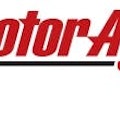Dodge and Jeep Vehicles with RE series Transmissions TCC/OD Cycling Problems
In this month’s POWERTRAIN PRO article “Dodge Diesel Transmission Dilemmas,” it was mentioned that TCC/OD cycling problems could be due to a variety of reasons. There are reasons specifically related to gas engines, 12 valve or 24 valve diesel engines or the same for all applications.
Like this article? Sign up for our enews blasts here.
The common description of this complaint is, as the vehicle reaches cruising speed, the lock-up converter clutch begins a rhythmic apply and release. Viewing this parameter in the scan tools data list, it is revealed that the computer is commanding this action. The same could occur with Overdrive.
Because a number of causes are shared by both gas and diesel applications with some being unique to each, the following list of causes will indicate which are for both or specific to gas or diesel. The list is not in order of priority. All possibilities are up for grabs.
1. PCM sensitive to TPS Noise from ECM (24 valve diesel)
2. PCM sensitive to noise originating from the alternator (Both)
3. Lift pump interference (24 valve diesel)
4. Water in fuel, warning lamp will be illuminated, (Diesel Only)
5. Faulty ECM (24 valve diesel)
6. Loose or poor ECM connector (24 valve diesel)
7. APP sensor relearn (24 valve diesel)
8. TPS cam or bushings worn (12 valve diesel)
9. Plastic throttle rod ball joints are worn (12 valve diesel)
10. Faulty TPS/APPS or TPS/APPS Circuit Problems (Both)
11. Low coolant level (Both)
12. A faulty or loose brake switch (Both)
13. Dirty battery cables, especially at the engine end of the negative battery cable (Both)
14. Battery cable ends that are too loose on the post (Both)
15. Faulty spark plugs or plug wires (Gas)
16. Erratic VSS (Both)
17. Faulty engine coolant temperature sensor (Both)
18. Engine running too cool (Both)
19. A faulty transmission temperature sensor (Both)
20. A faulty TCC Solenoid (Both)
21. A faulty early style 3 prong Park/Neutral Switch (Both)
22. A faulty new style transmission range sensor (Both)
23. Use of a Generic Scan Tool (Both)
24. A faulty crankshaft position Sensor (Gas)
25. A restricted Fuel Filter (Both)
26. A dirty air filter (Both)
27. Retarded valve timing (Sloppy timing Chain) (Gas)
The following list is the suggested corresponding corrective action to take:
1. Re-flash PCM as per factory bulletin 18-02-99
2. Install noise filter in TPS signal wire between ECM and PCM. Wrap alternator battery voltage supply wire in aluminum foil; disconnect wire as a test first
3. Replace the transfer pump or install a transfer pump relocation kit from atsdiesel.com
4. Replace fuel filter
5. Replace ECM
6. Repair ECM connector, resize terminal ends
7. APPS/ECM relearn procedure: KOEO, Depress throttle pedal to floor and then slowly release it once then turn key to off before starting
8. Replace throttle lever and bushings
9. Replace with steel rods, PN5011959AB
10. Repair TPS/APPS circuits or replace TPS/APPS (APPS terminal 4 ground circuit is known to get compromised and cause a noisy signal – repair as necessary).
11. Repair coolant leaks and bring coolant to correct level (Low coolant lamp may be illuminated if so equipped)
12. Replace brake switch or repair brake switch bracket
13. Perform voltage drop test - clean or replace battery cables and polish the negative cable’s engine attachment point as necessary
14. Remove the necessary material to insure cable end fits tightly
15. Replace spark plugs and ignition wires
16. Repair VSS or ABS computer problem
17. Repair or replace ECT sensor
18. Replace faulty thermostat
19. Repair TFT sensor circuits or replace TFT sensor
20. Replace TCC solenoid, (Has been known not to store P0743)
21. Replace Park/Neutral switch
22. Replace the transmission range sensor – this sensor is known to develop bushing wear allowing transmission fluid to load up inside the sensor and leak through into the harness connector. Unplug the sensor and inspect. If fluid is seen, change the sensor
23. Disconnect scan tool and drive vehicle or try a different scan tool
24. Replace crank sensor
25. Replace fuel filter
26. Replace air filter
27. Replace timing chain
Subscribe to Motor Age and receive articles like this every month…absolutely free. Click here
About the Author
